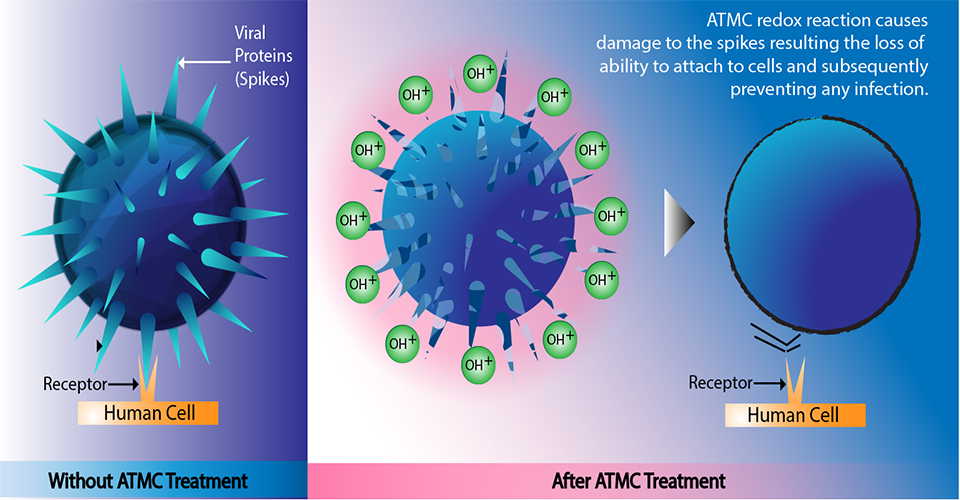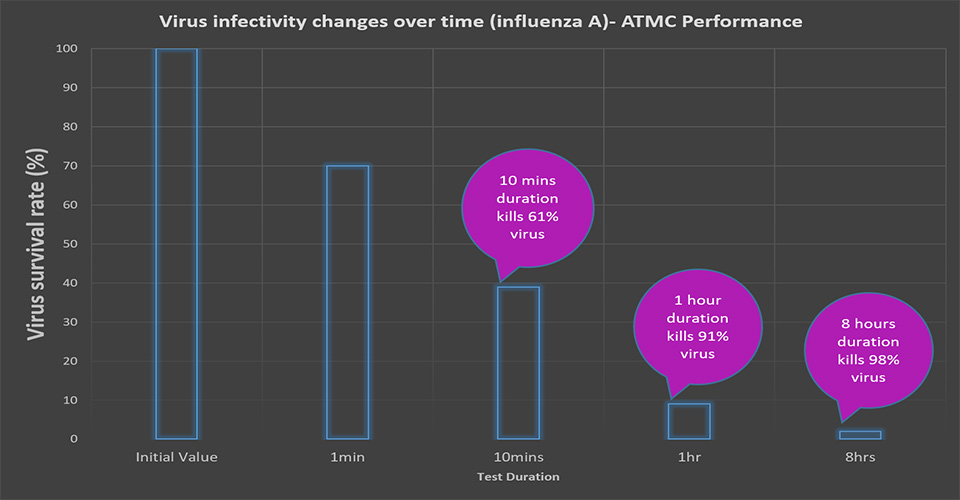ATMC COATING AS A MEASURE AGAINST INFLUENZA
Service /服务/Layanan
ANTI VIRUS PERFORMANCE
Common Infection Routes for Influenza

CONTACT INFECTION
Infection through contact with mucous membranes and skin or indirect contact through intermediate items.

DROPLET INFECTION
Infection when droplets discharged during coughing or sneezing (droplets of 0.005mm or greater) scatter and come into contact with mucous membranes in the nose, etc.

AIR-BORNE INFECTION
The moisture in the droplets evaporates and dries out and they become even smaller particles (0.005mm or less), which are droplet nuclei. These hang in the air and people can become infected when they breathe them in.
The Mechanism In Which The ATMC Coating Suppresses the Type A Influenza Virus

Methodology
(Presumed)
The ATMC coating is considered to be an effective method for suppression, as when it is used at points which are frequently touched by people, the coated film remains for a long period.
It is thought that there is a reaction with the concentrated oxidants in the inorganic porous spaces in the coating film and this causes damage to the viral proteins (spikes) which are essential for the viral infectivity, and the viruses are consequently devitalized.
Test Results
A test which was conducted by Beili University Environmental Science Research Center (corporate organization), revealed that ATMC coating effectively reduced the infectivity of the virus, which is 61% less than the initial value in 10 minutes and 91% less in one hour (refer Fig 1). This test fully proves that ATMC coating is effective against the influenza A virus.
Another test which was conducted recently in 2020, revealed that ATMC coating had a significant inhibitory effect on “Cat Intestinal Coronavirus (*Coronavirus A)”.
Note:
Coronaviruses A and B (including coronaviruses that cause the common cold in humans) usually infect mammals. Many common coronaviruses that cause pet diseases, such as feline intestinal coronavirus, are type A coronaviruses.
The SARS-CoV-2 that caused the recent human COVID-19 respiratory disease outbreak is a type B coronavirus, so the basic structure between the two is very similar.

